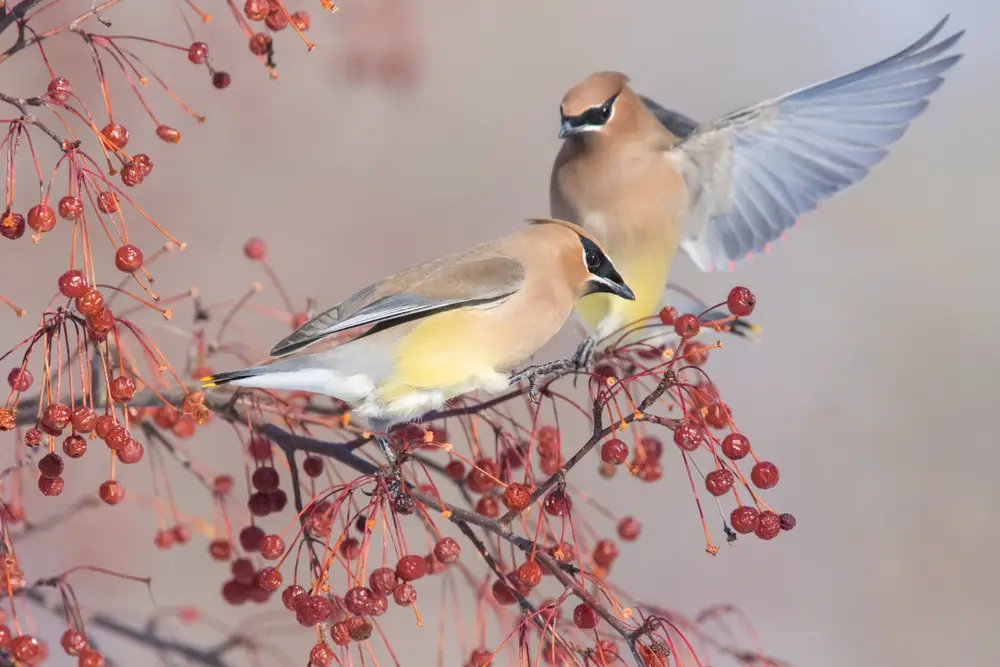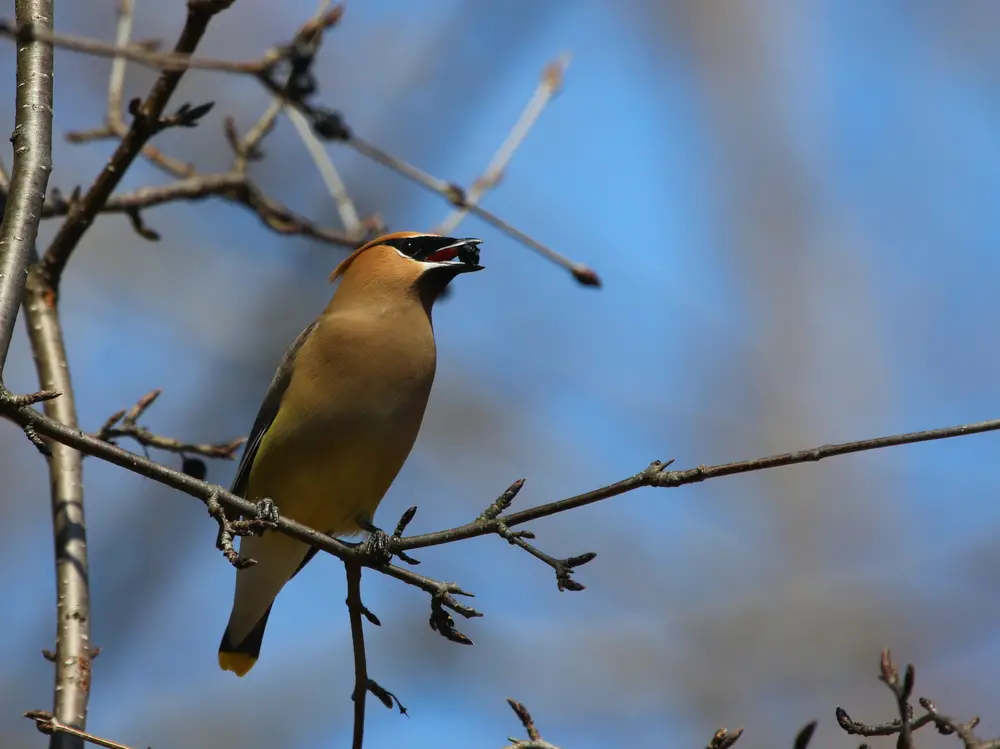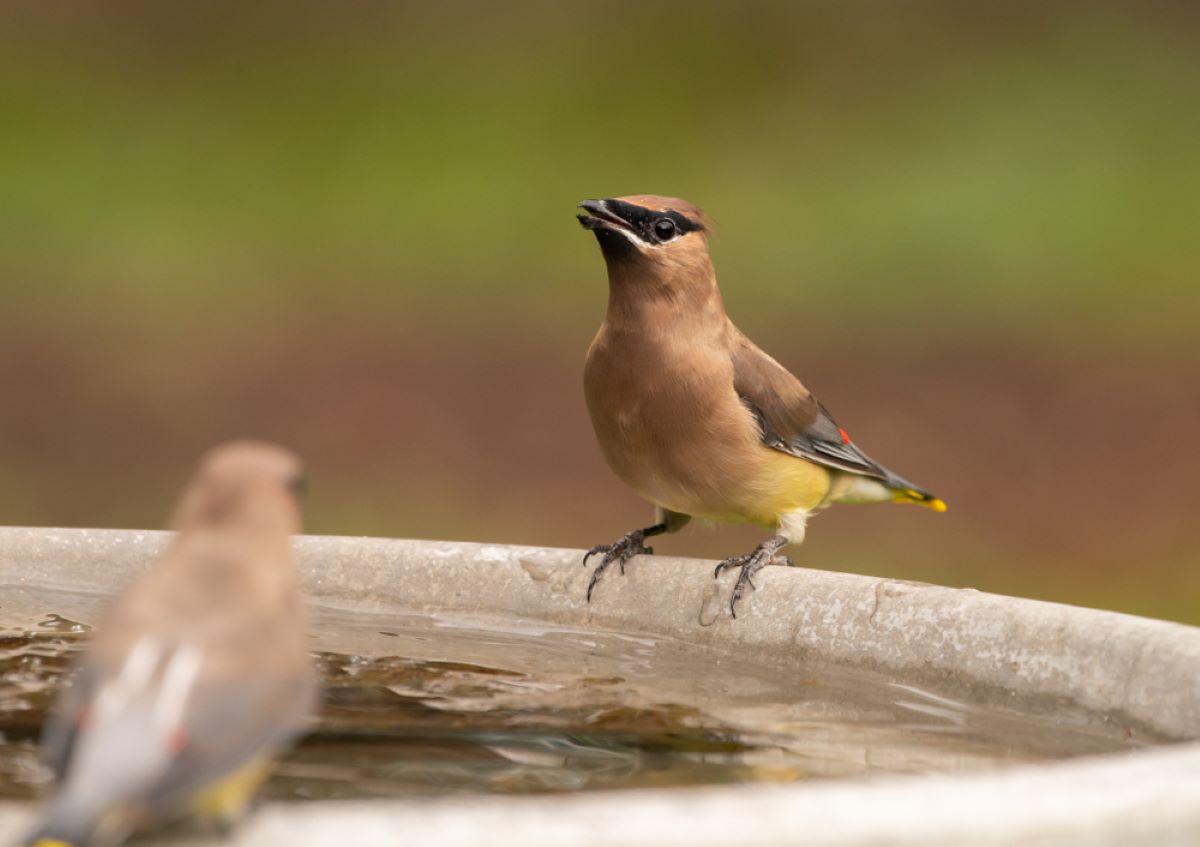The cedar waxwing call is a high-pitched, piercing sound you'll hear while they perch or take off as a flock. Cedar waxwings have distinctive calls with varying pitch, frequency, and duration, all correlated to courtship displays and calls.
These bird sounds won’t resemble calls of other species once you get used to hearing them. Plus, the cedar waxwing is a common bird to see around the US, so you might notice it in your yard.
Here, you’ll learn how to recognize their calls like experienced birders. Plus, you’ll get to read more about what cedars look like, what they eat, and how they breed. Check out the info below.
What’s the Sound of a Cedar Waxwing?
Cedar waxwing has several distinctive calls. The pitch, duration, and frequency are related to courtship displays, contacts, and calls. There’s a buzz, a high-pitched trill “iii.” Another common call you may hear is a sharp and long whistle, often from the flock when they take off.
The vocalizations are usually around 8 kHz. Cedars’ bird songs come down to two kinds—a high-pitched “zeee” and a whistle. Flocks of cedar waxwing often communicate during flight, and they don’t impersonate other birds as mockingbirds do.
What Sounds Like a Cedar Waxwing?
You’ll hardly find another bird or the family subspecies that sounds as piercing as cedars. However, some of their flock alarm calls may resemble the sound of grasshoppers. If you’re looking to learn more about sounds similar to ones of a cedar waxwing, there are several other sites to check out:
- The National Audubon Society
- The oldest organization in North America
- The Cornell Lab of Ornithology
- Macaulay Library of sounds
- Bird guide phone apps
Hearing how cedar waxwings sound is the best way of knowing if you have them around your home.

More About Cedar Waxwing (Bombycilla Cedrorum)
The cedar waxwing (bombycilla cedrorum) belongs to the family Bombycillidae. This is a medium-sized bird that belongs to the order of Passeriformes. Its conservation status is not of concern. This North American bird is around 5.5 to 6.7 inches long with a wingspan of up to 12 inches.
The cedar waxwing is a pretty bird with long wings, a short tail, and a nice crest. Both sexes are similar in appearance. Adults have buffy-brown heads, breasts, and racks. This brown turns to pale yellow on their bellies and goes to grey-brown on their backs. Undertail feathers are white, while the legs and feet are black.
Cedar Waxwing Range and Migration
Adults also have a narrow, black mask that borders with white, spanning to the rear of their eyes. Cedars are smaller and more brownish than their relative, the bohemian waxwing. Cedars are also known for the reddish droppings on their wing feathers. These droplets are the same color as the madrone berries cedars like to eat.
Cedar waxwings fly at about 25 mph up to 2,000 feet of altitude. When migrating, they’ll move in flocks, resembling the motion of small, pale European starlings. Cedars like open woodlands, fruiting trees, and orchards. During winter, they’ll visit towns.
Cedar Waxwing Breeding
Cedars’ breeding range includes open wooded areas in Canada and the following parts of the US:
- Maryland
- Virginia
- Southern and northern Georgia
- Northern United States
- Northern California.
These birds will spend the winter in Southern US, Central America, and South America. Their mating season begins at the end of the spring and finishes in late summer. Both the males and females do participate in nest construction and raising babies. These birds usually have one or two broods, and their young will leave the nest about 14 to 18 days after hatching.

Is a Cedar Waxwing Rare?
This bird species are abundant and can be seen in open woodlands, fallow lands, farms, and urban gardens. They’re not around grassy areas, yet they are present around the streams. During summer, cedars will visit southern Canada, southeast Alaska, and northern British Columbia.
It’s also around central Ontario and Quebec. Cedar waxwing is local in North and Central America. They’re not a rare sight in these areas.

